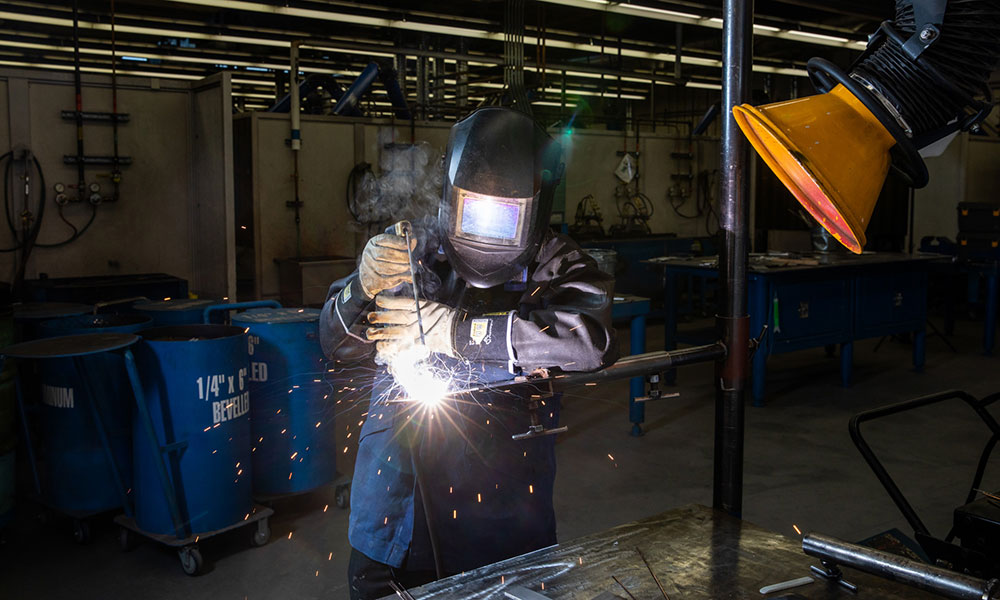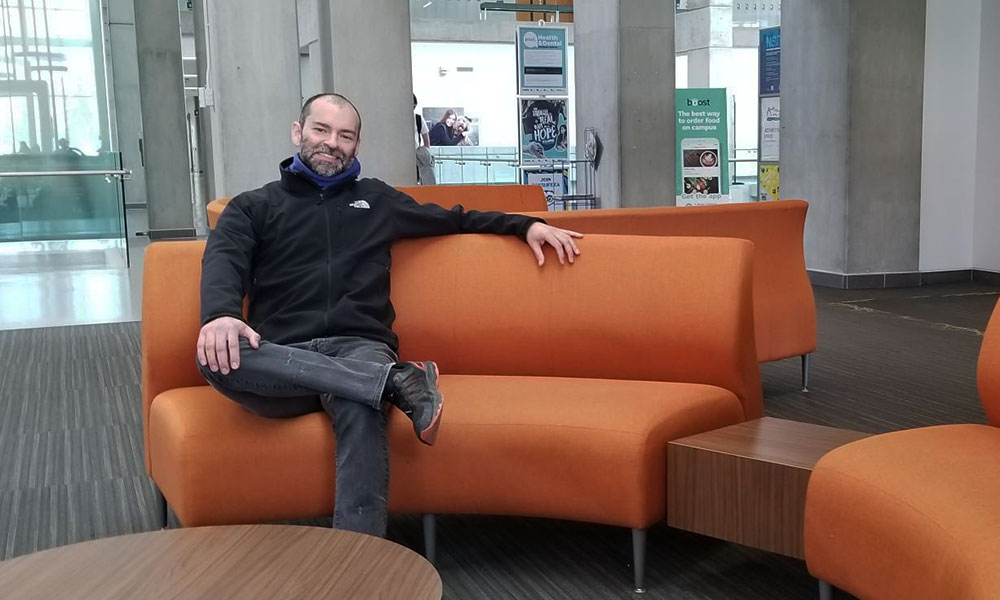New pathway provides entry into welding previously available only to apprentices
About four years ago, Carlos Rojas (Advanced Welding Technology ’23) and his wife began to think about changing everything. They were living in Santiago, the bustling metropolitan capital of their native country of Chile, and looking beyond not just the city limits but the national borders.
There were multiple motivators. At the time, the typically tranquil South American country erupted in a period of socio-economic protest. That unrest bolstered their adventurous natures. It also struck them as an opportunity to find a place for them and their pre-teen son to become more proficient speakers of English.
“So we started looking for alternatives for moving abroad,” says Rojas, who’s now 42.
Canada won out on the international stage as a potentially safer haven (that, and the immigration website was easy to understand, Rojas admits). But Edmonton won out because of NAIT.
In Santiago, Rojas was a mechanical engineer working for a manufacturing company. While his wife’s credentials as a civil engineer were internationally certified (allowing her to quickly land a local job), his weren’t. Upgrading them would cost more and take longer than he wanted. So Rojas decided to try something entirely new: welding.
“Coming here and starting to do something with my hands was a good challenge for me,” he says.
Like the family’s move, Rojas’ choice of program was adventurous in its own right. Advanced Welding Technology represents a first for Alberta, positioning him to enter his field with a diploma rather than as an apprentice, something that until recently would have been virtually impossible for an international student interested in trading an old life for a new one.
A new pathway into trades

The trades diplomas were created two years ago, in part for people like Rojas who might have faced a barrier to becoming an apprentice. Welding is part of a group of new programs comprising Advanced Plumbing Technology, Automotive Service Technology and Electrical Installations Technology.
In a conventional apprenticeship, a student must first find an employer in industry, after which they’ll train primarily under a journeyperson certified in the trade. For two months of each year of apprenticing, they attend a post-secondary institute such as NAIT for classroom instruction. The diplomas change that, opening up trades to a wider group of students.
“These programs were designed to provide alternative pathways into skilled trades professions,” says Todd Matsuba (Bachelor of Business Administration ’23, Electrician ’17), School of Skilled Trades associate dean academic and a lead on the creation of the programs.
That alternative involves two years of continuous instruction for students. “It really does make them very valuable to an employer as they move forward,” says Matsuba.
Once a student is on site with an employer and starting the hours required for traditional certification, “you never have to leave work to go back to school,” he adds. “You stay at work … instead of having to leave for two months.”
Rojas feels there’s more value in the program for potential employers than the convenience of its structure. In addition to giving him experience in a variety of welding techniques, the program also included courses in robotic welding, fabrication, inspection and even leadership.
“We explored almost everything,” says Rojas. As an apprentice in the same amount of time, he knows he would have learned what he needed to do the job. Because of the diploma, however, Rojas feels he learned “a lot more.”
A future in Edmonton

As he waits for his parchment and begins to survey opportunities in the field, Rojas already feels like the transition from one hemisphere to the other – putting more than 10,000 kilometres between the past and present – has been successful.
For one thing, the field seems promising, with the profession being in steady demand and offering a high average salary.
What’s more, the diploma is a gateway to more than employment. As Matsuba notes, “You can parlay that diploma into further education.” Should Rojas ever choose, he could use his diploma as a prerequisite to a degree such as a Bachelor of Business Administration or Bachelor of Technology.
For now, though, Rojas is content to look at more immediate signs that he and his wife made the right choice. The couple’s son is 11 now, comfortable at school, and has made friends. Unlike his dad, the youth spoke no English at all before coming to Canada.
“Now, after a year and a half, he is speaking way faster than me,” says Rojas proudly.
They miss family back in Chile, and connect with them frequently through video calls, but Canada is already feeling like home.
“I like the country and the city – people are really nice here,” says Rojas. “I just love it – the river valley, the mall.”
“It has been a big adventure,” he adds. “At the moment, everything is going well.”